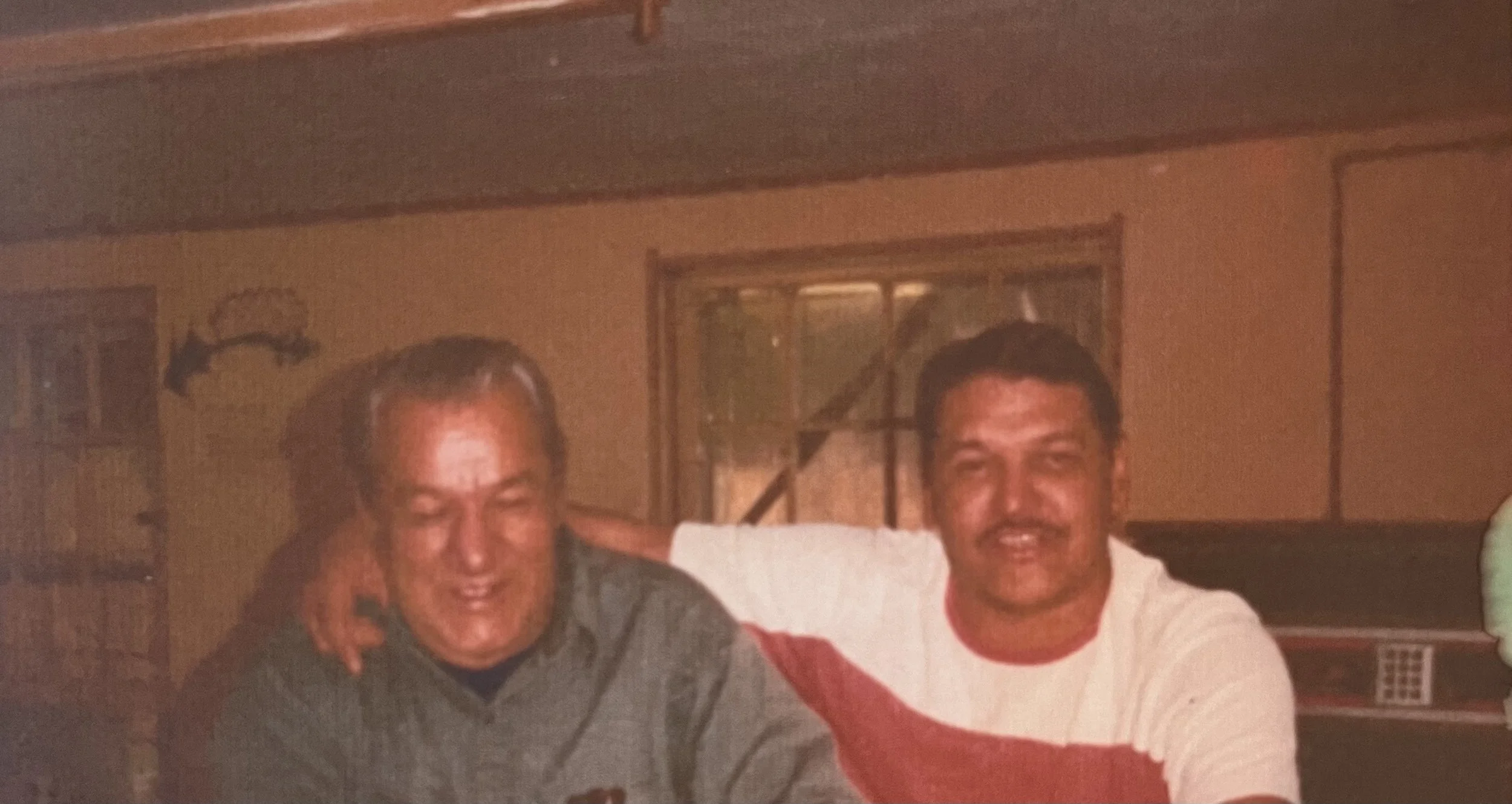Hunting in Brasher
(Left to Right) Dave Hall Sr. and Dave Hall Jr. enjoying some father son time. Circa. 1978 (Courtesy: Jackie Hall)
Story told by Dave Hall
I hunted in Brasher, New York, since 1982. A friend told me about it, because he used to go up there. Before that we would go all the way to Lake Placid to hunt deer, because there were not many deer here. You couldn’t find any around here, very seldom. When somebody spotted a deer, everybody went out and killed it right away. So, we never had a chance to get a whole bunch. Now, we got deer all over.
There’s a lot of deer there now. Brasher is state land too now, but they don’t say nothing, we just show them we got a tag on the back of our coat. If you’re Indian, it didn’t matter. We could get a bunch of them, but they would rather we get maybe a couple because you don’t need more than that. One family could get two, maybe three deer to last through the winter.
I used to fill up my freezer. I got three freezers now, because we’re hunting moose now. And that’s like shooting four deer.
KANIEN’KÉHA VERSION
↓
KANIEN’KÉHA VERSION ↓
Brasher rotorathónhne'
Three men standing together with their hunted deer. (Courtesy: Kanien’kehá:ka Onkwawén:na Raotitióhkwa Language and Cultural Center)
Dave Hall ROKÁ:RATON
Tsi náhe' 1982 shiiohserá:te' shiekató:rats ne Brasher, New York nonkwá:ti. Shaià:ta ontiatén:ro wahakwahronkà:ten', ase'kén tho shes iehréhtha'. Ohén:ton ne thó:ne ieniakwahahò:kten' tsi niió:re' Lake Placid ieniákwawe' ne ohskenón:ton aiakwató:rate', ase'kén iah é:so tekontinákerehkwe' ne kèn:'en. Iah teiotòn:'on káneka aktóntie' ahsheia'tatshén:ri' ken' nonkwá:ti, kwah ietsó:re'k. Nó:nen ónhka'k enkonwá:ken' ne ohskenón:ton, tsik ónhka ienhatiiá:ken'ne' tánon' óksa'k enkonwário'. Iah ki' nonwén:ton teionkwate'shennaientà:'on ne é:so kón:ti aionkwario'taién:ta'ne'. Nòn:wa, tsik nón:we kontinákere' ohskenón:ton.
É:so kón:ti tkontinákere' ne tho ó:nen. Wahstonhronòn:ke shononhóntsa' ó:nen ne Brasher. Nek tsi kwah iah thé:nen thahonnì:ron', kwah ki' nek ne eniakhina'tón:hahse' tsi iohnhe'tarèn:ton onkwatia'tawi'tsherà:ke. Tóka' onkwehón:we nahsia'tò:ten', iah thé:nen teiontié:ren. Aón:ton' ki' wáhi é:so kón:ti aionkwario'taientà:seron', nek tsi sénha ahatirá:ko' ne tohkára nikón:ti aionkwario'taién:ta'ne' ase'kén iah tha'teiotonhontsóhon ísi' nón:we ne thí:ken. Skahwatsí:ra aón:ton' tekeniiáhse, tóka' áhsen nikón:ti nahotirio'taién:ta'ne' ohskenón:ton ahón:neke' tsi niióhseres.
Katie'níhtha' shes ne kanennio'kwanóhstha'. Áhsen ní:kon ó:nen wátien' kanennio'kwanóhstha', né: tsi ska'niónhsa iakwató:rats nòn:wa. Ok né: sha'té:ioht tóka' kaié:ri nikón:ti ohskenón:ton enhsheiaròn:tate'.
Story told by: Dave Hall
Edited by: Jackie Hall, Local Journalism Initiative Reporter


